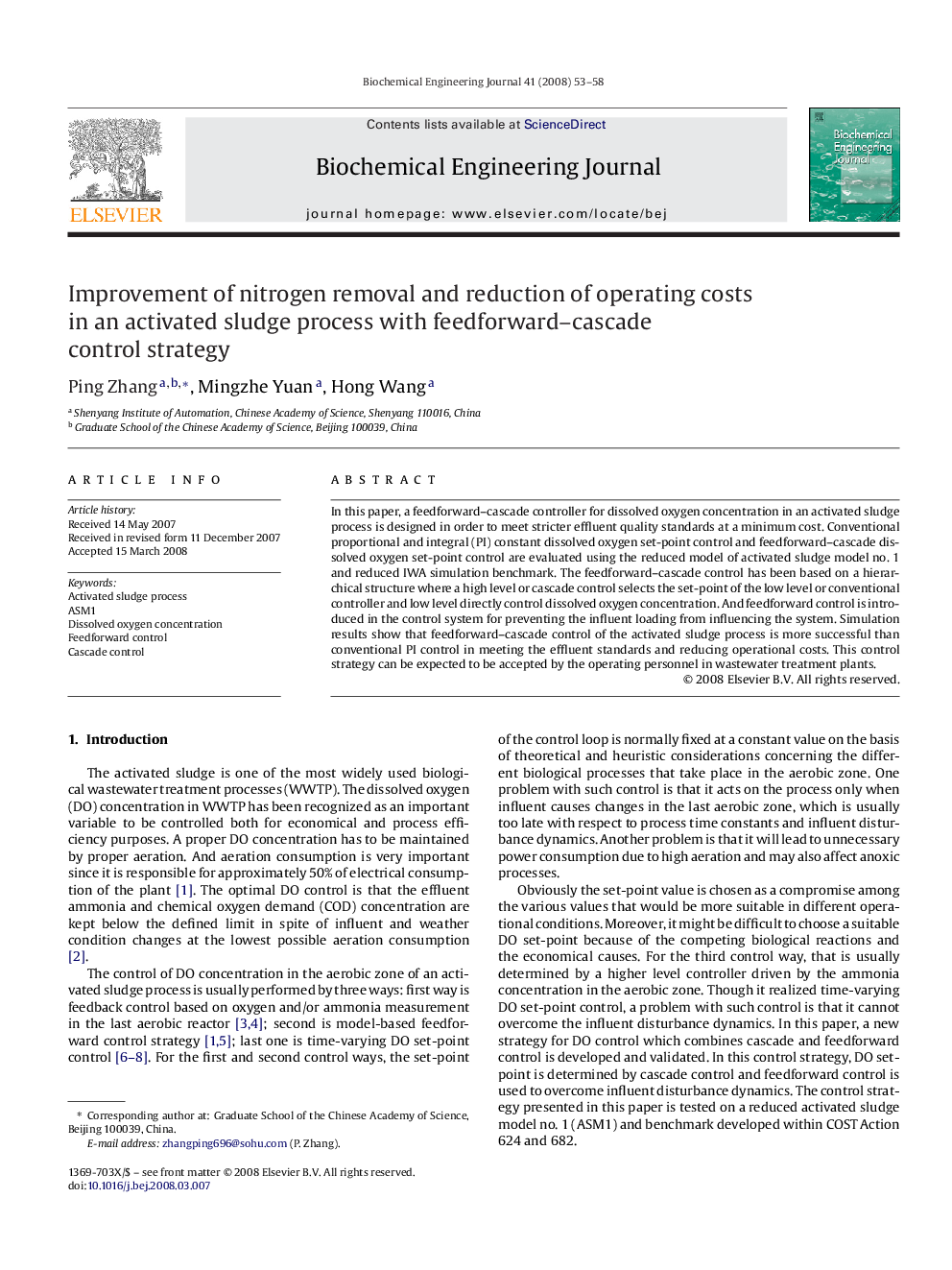| Article ID | Journal | Published Year | Pages | File Type |
|---|---|---|---|---|
| 4416 | Biochemical Engineering Journal | 2008 | 6 Pages |
In this paper, a feedforward–cascade controller for dissolved oxygen concentration in an activated sludge process is designed in order to meet stricter effluent quality standards at a minimum cost. Conventional proportional and integral (PI) constant dissolved oxygen set-point control and feedforward–cascade dissolved oxygen set-point control are evaluated using the reduced model of activated sludge model no. 1 and reduced IWA simulation benchmark. The feedforward–cascade control has been based on a hierarchical structure where a high level or cascade control selects the set-point of the low level or conventional controller and low level directly control dissolved oxygen concentration. And feedforward control is introduced in the control system for preventing the influent loading from influencing the system. Simulation results show that feedforward–cascade control of the activated sludge process is more successful than conventional PI control in meeting the effluent standards and reducing operational costs. This control strategy can be expected to be accepted by the operating personnel in wastewater treatment plants.
